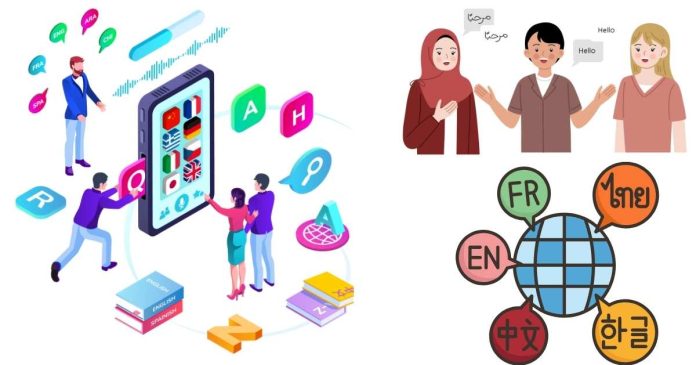In our increasingly globalized world, accurate language translation apps are essential for communication, travel, and business. With so many options available, you may wonder: which app is the best and most accurate for your needs? Here’s a breakdown of some of the leading language translation apps, their features, and how they compare in accuracy and usability.
1. Google Translate
- Key Features:
- Translates text, speech, images, and handwriting.
- Offers over 130 languages (as of 2025).
- Offline mode for about 60 languages.
- Real-time camera translation for signs, menus, and documents.
- Accuracy:
Google Translate has improved significantly over the years, especially with the integration of neural machine translation (NMT). While it excels at common languages like Spanish, French, and German, it may struggle with less popular languages or highly complex sentences. - Best For: Everyday conversations, quick translations, and travel needs.
2. DeepL Translator
- Key Features:
- Focuses on high-quality, context-sensitive translations.
- Supports fewer languages (30+), but excels in European languages like German, French, and Dutch.
- Offers a professional tone for business and academic translations.
- Accuracy:
DeepL is known for its contextual accuracy and nuanced translations, particularly for formal or creative writing. It outshines competitors when translating sentences with subtle meanings. - Best For: Professionals, students, and anyone needing precise translations for work or study.
3. Microsoft Translator
- Key Features:
- Supports over 100 languages.
- Offers text, voice, and image translation.
- Conversation feature allows for real-time translation during group chats.
- Integrates well with Microsoft Office products.
- Accuracy:
Microsoft Translator provides solid translations for popular languages and integrates seamlessly with other Microsoft tools. While not as precise as DeepL for nuanced content, it’s highly reliable for everyday use. - Best For: Multilingual group conversations and users in the Microsoft ecosystem.
4. iTranslate
- Key Features:
- Supports text, voice, and website translation for over 100 languages.
- Has a phrasebook for travel and offline functionality.
- iTranslate Pro includes a voice-to-voice translation feature.
- Accuracy:
While accurate for casual phrases and travel scenarios, it’s not as context-sensitive as DeepL or Google Translate. It’s better suited for short, conversational exchanges. - Best For: Travelers and casual users.
5. SayHi
- Key Features:
- Focuses on speech-to-speech translation for 90+ languages.
- Allows voice customization (e.g., adjusting speed or selecting male/female voices).
- Accuracy:
SayHi is excellent for spoken conversations and casual communication, but less versatile for text or image translations. - Best For: Real-time verbal communication.
6. Papago
- Key Features:
- Specializes in Asian languages, including Korean, Japanese, and Chinese.
- Includes text, speech, and image translation.
- Offline translation for select languages.
- Accuracy:
Papago provides highly accurate translations for Asian languages and is an excellent tool for travelers or learners focusing on this region. - Best For: Translating Korean, Japanese, and Chinese.
7. Reverso
- Key Features:
- Offers text and phrase translations for 20+ languages.
- Includes language learning tools like flashcards and contextual examples.
- Accuracy:
Reverso excels at idiomatic expressions and phrases, offering translations in context. It’s particularly useful for learning and practicing a language. - Best For: Language learners and those focusing on contextual understanding.
How to Choose the Best App for Your Needs
- For Travelers: Google Translate, iTranslate, or Papago (for Asian languages) offer quick and easy solutions for navigating foreign countries.
- For Professionals: DeepL Translator provides accurate and context-sensitive translations for work or formal communication.
- For Conversations: SayHi and Microsoft Translator are excellent for real-time verbal communication.
- For Learning: Reverso and Google Translate are great for expanding vocabulary and understanding grammar.
There isn’t a single “best” translation app—it depends on your specific needs. Google Translate stands out as a versatile option for general use, while DeepL leads in accuracy for professional and nuanced text. For travelers, iTranslate and Papago are excellent tools, and if you’re focusing on conversations, SayHi or Microsoft Translator is your best bet.
Explore a few options, and you’ll find the app that perfectly suits your requirements. Happy translating!


